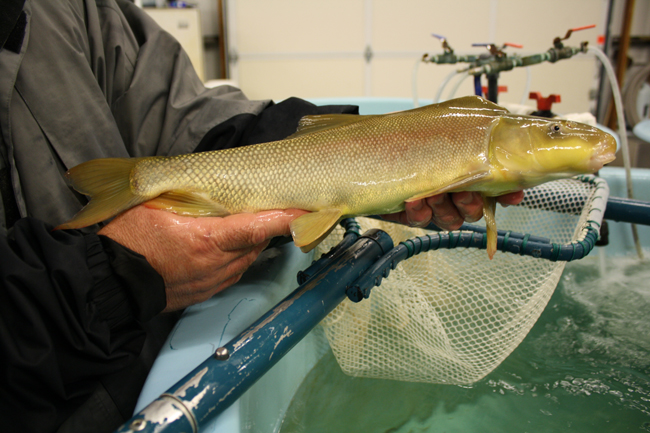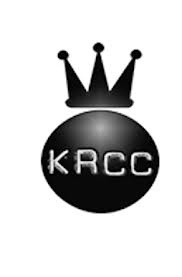|
Listen Some native fish in the Colorado River and its tributaries are struggling to stay afloat. Invasive species, dams and water diversions can complicate the recovery of endangered fish in those waterways. One long-standing program ties together federal and state agencies with regional groups to help these cold-blooded creatures make a comeback. |
|
| Listen to the Story | Transcript |
Pair Sound with Sight
 |
| The Ouray National Fish Hatchery-Grand Valley Unit in Grand Junction, Colorado has 50 large indoor tanks where endangered humback chub and bonytail are raised. Credit: Laura Palmisano |
 |
| Dale Ryden, a biologist with the U.S. Fish and Wildlife Service, holds an endangered razorback sucker. Credit: Laura Palmisano |
 |
| The endangered razorback sucker. Credit: Laura Palmisano |
 |
| Ryden holds an endangered humpback chub, raised at the Grand Valley Unit of the Ouray National Fish Hatchery. Credit: Laura Palmisano |
 |
| Dale Ryden, a biologist with the U.S. Fish and Wildlife Service, holds a cardboard cut out of an endangered Colorado pikeminnow. The fish can live to be up to 50 years old and grow six feet long. However, nowadays it's extremely rare to find one that large and old. Credit: Laura Palmisano |
 |
| This fish ladder on the Redlands Diversion Dam helps fish travel upstream. Credit: Laura Palmisano |
 |
| The Redlands Diversion Dam straddles the Gunnison River, a tributary of the Colorado River. Credit: Laura Palmisano. |
 |
| Kevin Conrad is the operations manager for the Grand Valley Water Users Association. Credit: Laura Palmisano |
Connecting the Drops Partners
Connecting the Drops is a radio collaboration between the Colorado Foundation for Water Education and Colorado Community Radio Stations KGNU, KDNK and KRCC.
Support for 2016 programming comes from CoBank




